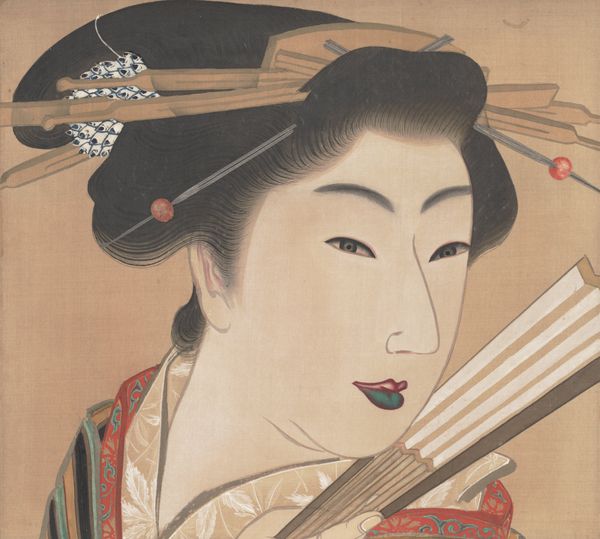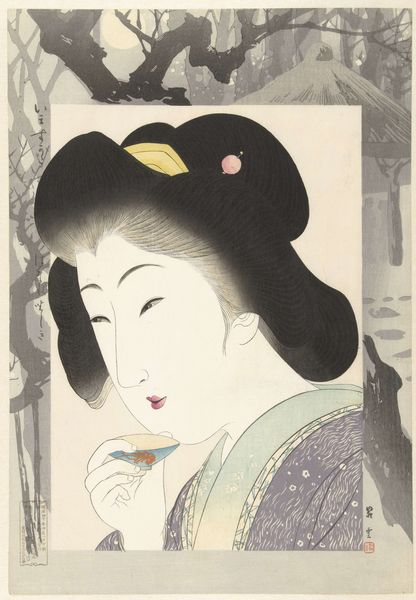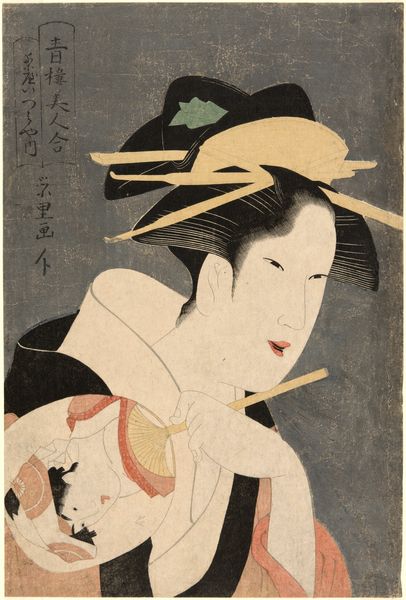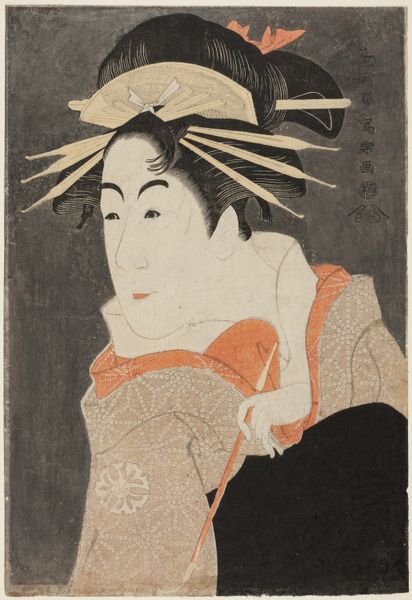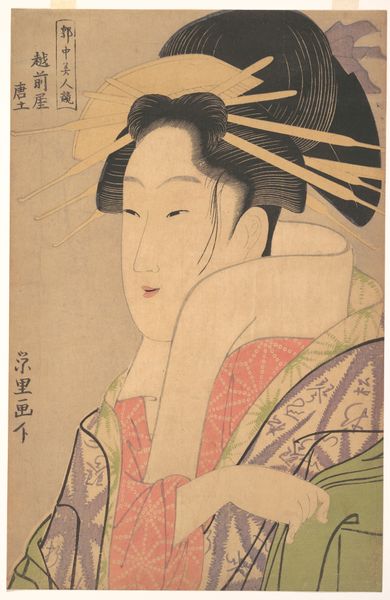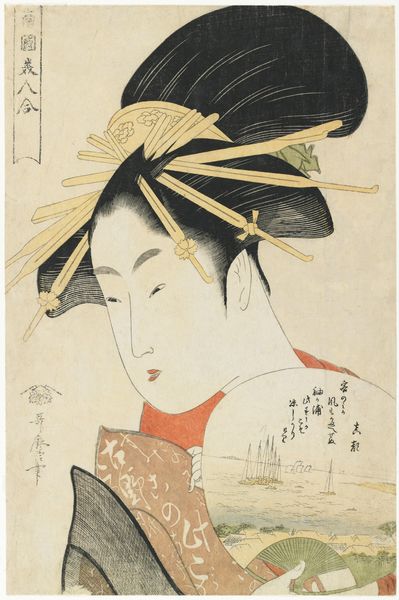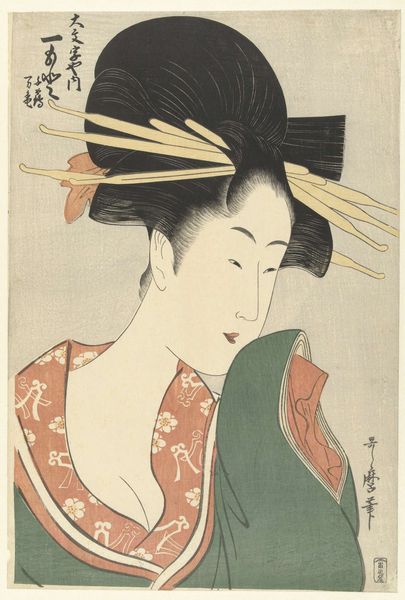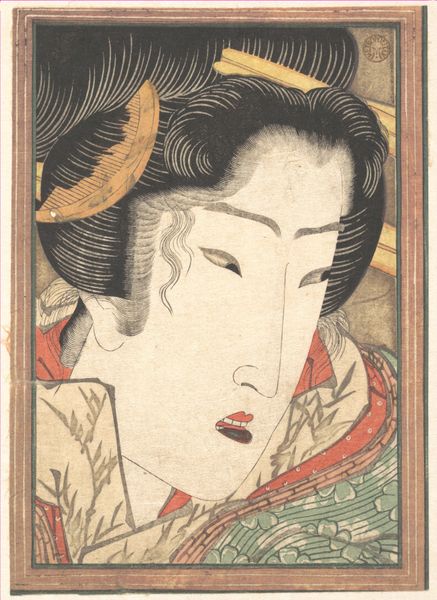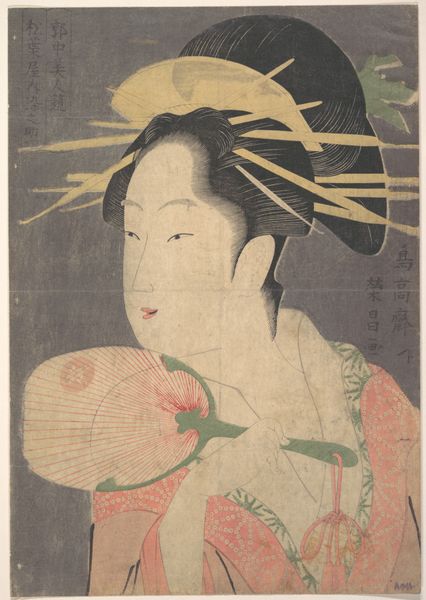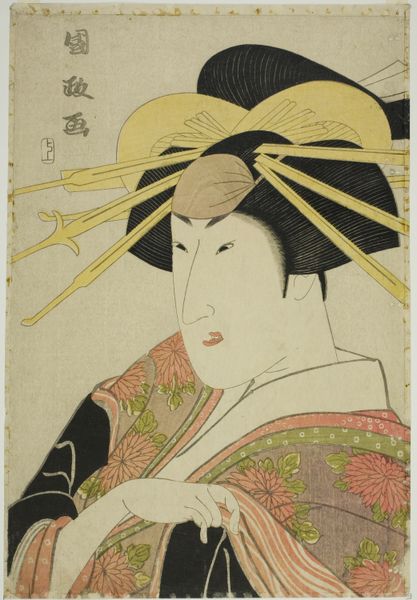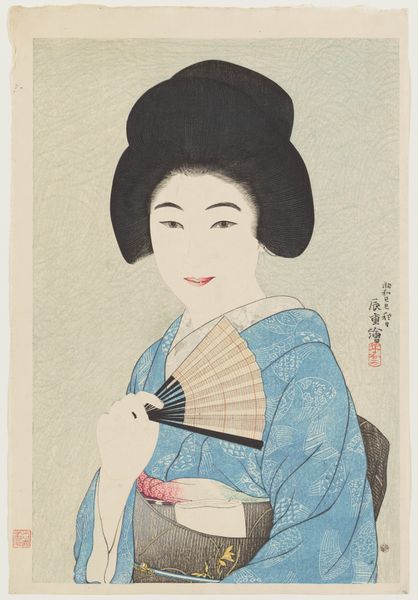![Prostitute [center of a triptych of Three Beauties] by Mihata Jôryû](/_next/image?url=https%3A%2F%2Fd2w8kbdekdi1gv.cloudfront.net%2FeyJidWNrZXQiOiAiYXJ0ZXJhLWltYWdlcy1idWNrZXQiLCAia2V5IjogImFydHdvcmtzLzVhODc4NmNjLTdkZmItNDY0Yy04NjdjLTBjOWE4YTM2OTUzMy81YTg3ODZjYy03ZGZiLTQ2NGMtODY3Yy0wYzlhOGEzNjk1MzNfZnVsbC5qcGciLCAiZWRpdHMiOiB7InJlc2l6ZSI6IHsid2lkdGgiOiAxOTIwLCAiaGVpZ2h0IjogMTkyMCwgImZpdCI6ICJpbnNpZGUifX19&w=3840&q=75)
Prostitute [center of a triptych of Three Beauties] c. 1830s
0:00
0:00
ink, woodblock-print
#
portrait
#
caricature
#
ukiyo-e
#
japan
#
ink
#
woodblock-print
#
portrait drawing
#
watercolour illustration
Dimensions: 10 1/2 × 11 3/8 in. (26.67 × 28.89 cm) (image)55 3/8 × 25 5/16 in. (140.65 × 64.29 cm) (mount, without roller)
Copyright: Public Domain
Curator: Mihata Jôryû's "Prostitute [center of a triptych of Three Beauties]" created circa 1830s using ink and woodblock print, depicts a serene yet compelling figure. What strikes you initially about this piece? Editor: The controlled gaze is what I first notice—it is powerful, confident, but also seems to hold back, masking something. It's as if she understands the complex politics of her position. Curator: Absolutely. This is characteristic of Ukiyo-e art which often elevates everyday subjects into archetypes. What symbols might we be reading here that reflect cultural ideas about women, beauty, and perhaps even commodification? Editor: The elaborate hairstyle and makeup point towards a constructed identity, indicative of Edo period courtesans who held a unique social standing; these are clear marks of profession, but also a demonstration of the power of spectacle. Curator: The book, too, speaks volumes. Is she educating herself? Entertaining a client? Or perhaps it is intended to simply reinforce a trope? There is tension between self-possession and presentation. Editor: It is interesting how the male gaze plays out here—both within the original social context and the present day, inviting reflection about agency. To what degree does this image celebrate or critique the commodification of women? Curator: It dances ambiguously between those perspectives, providing an example of social negotiation occurring within the artwork itself, with the viewer, then as now, completing that negotiation through observation. The ambiguity invites ongoing re-interpretations across time. Editor: Looking closely, there's almost a painterly quality achieved with the woodblock. It moves beyond simple replication to a complex rendering of character within rigid socio-economic forces. Curator: This balance of precision and evocation reflects not just the skills of Mihata Jôryû, but the wider cultural currents he navigated as an artist commenting upon society, capturing an individual whose image resonated then, and still does today. Editor: Agreed. It stays with you; her image continues provoking essential questions concerning how we assign value.
Comments
No comments
Be the first to comment and join the conversation on the ultimate creative platform.

